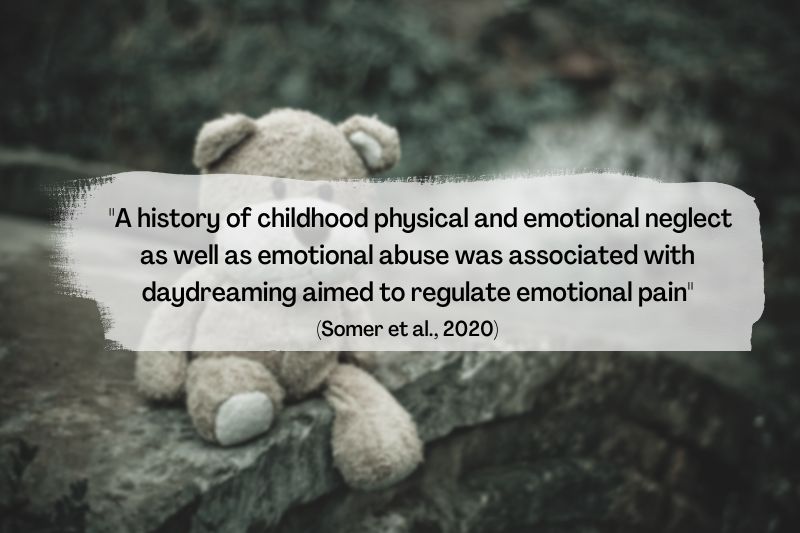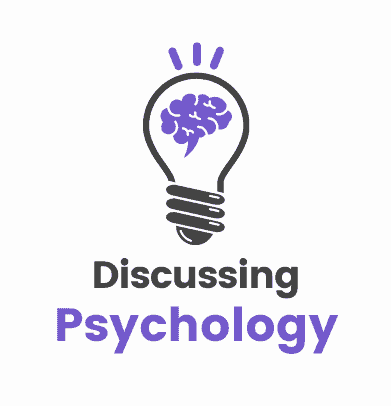On the surface, hallucinations and maladaptive daydreaming seem almost interchangeable.
Both cause feelings of deep disconnection from your normal sensory experience (dissociation) and can be massively debilitating to your quality of life.
But the similarities end there. A closer look shows there are distinct differences in both conditions that lead to drastically altered experiences and treatment interventions.
What Is The Difference Between Maladaptive Daydreaming and Hallucinating?
| Maladaptive Daydreaming | Hallucinations |
| Experienced as imaginary. | Experienced as real. |
| Voluntarily, consciously entered into. | Uncontrollable and unpredictable. |
| Can last hours. | Brief. |
| Highly detailed and structured. | Disorganized, often incoherent or unconnected to one another. |
| Enjoyable, rewarding, or meeting unfulfilled needs. | Usually negative but can relate to anything. |
| Content can be consciously directed. | No control over content. |
| Triggered or facilitated by pacing or repeated movement. | Accompanied by odd or erratic movement. |
As these differences illustrate, the experience of maladaptive daydreaming (MD) compared to hallucinations is very distinct.
Daydreams are long, detailed, and pleasurable fantasies to which a person willingly (albeit compulsively) devotes huge portions of their waking life.
Hallucinations, by contrast, are sudden and chaotic intrusions into reality that can be uncontrollable and alarming.
Notably, a key point of difference is that maladaptive daydreams are controllable; hallucinations are not.
What Causes Each Type of Dissociation to Develop?
Early life trauma often plays a role in the development of both maladaptive daydreaming and psychosis, or the loss of touch with reality (of which hallucinations are a symptom).
Our early experiences can have a profound impact on our sense of self, our understanding of the world, and even our brain development.
Enduring traumatic circumstances such as abuse or neglect can lead to serious mental health challenges later in life, including maladaptive daydreaming and several conditions linked to hallucinations.
Despite this, there is very little overlap in general between maladaptive daydreaming and psychosis and hallucinations. While trauma may increase one’s risk, the two conditions develop in different ways.
Hallucinations: A Closer Look
Hallucinations and psychosis are common symptoms of several mental health conditions, most notably:
- Schizophrenia
- Bipolar disorder
- Borderline personality disorder
- Sleep disorders
Other causes can include:
- Dementia
- Parkinson’s disease
- Brain tumors
- Epilepsy
- Drug abuse
In most of these conditions, the cause of hallucinations is to do with abnormal or impaired brain function.
Schizophrenia, for example, is linked to abnormalities in the hippocampus and temporal and frontal lobes of the brain, as well as to differences in how the brain responds to neurotransmitters.
Alzheimer’s and Parkinson’s disease lead to brain degeneration, which makes it harder to separate reality from imagination, while brain tumors in areas of the brain linked to vision can cause you to see things which aren’t there.
While the exact causes aren’t always fully understood, the bottom line is that hallucinations are driven at least in part by some form of physical, biological change in how the brain works.
This is not the case for maladaptive daydreaming; there is currently no evidence to suggest that MD has any biological basis in the brain.
What Leads to the Development of Maladaptive Daydreaming?
It is, however, linked to several distinct personality traits, including:
- Capacity for absorption, or the extent to which one is able to become fully immersed in a task, activity, or thought to the point where other sensory experiences fall by the wayside.
- Addictive personality (and addiction to fantasy in particular), or how easily one becomes absorbed in imagination and fantasy to the point where it becomes addictive.
- Social anxiety, or finding social interaction frightening or difficult, often leading to impaired social skills and shyness.
Research from 2017 found strong correlations between MD and all three of these traits, as well as with childhood trauma.

It also found that absorption and fantasy addiction (or fantasy proneness as it is sometimes called) mediated the link between maladaptive daydreaming and anxiety in social situations and trauma.
In other words, trauma and social anxiety only lead to MD if the person also has the capacity for vivid imagination and a predisposition to becoming absorbed in their fantasies.
To summarize, childhood trauma can lead to maladaptive daydreaming and psychosis, but is not a sufficient criterion for either.
Both conditions have different underlying risk factors: fantasy proneness and capacity for absorption for MD and physical brain impairments for psychosis and hallucinations.
These underlying vulnerabilities can then be exacerbated by traumatic experiences, leading to the development of either condition.
Impact
Both maladaptive daydreaming and hallucinations can be highly debilitating, but in very different ways.
Hallucinations can be extremely frightening to experience and can lead to disorganized thoughts and real difficulty living a normal life. Many people with severe psychosis are unable to function in society and require high levels of care.
Maladaptive daydreaming likewise causes significant impairment. Two in 5 people with the condition are unable to hold down a job, while 28% have attempted suicide.
But it is not the daydreams themselves which cause such distress—they are meant to be pleasurable after all.
Rather, it is the effect that the urge to daydream has on the rest of one’s life that makes MD such a difficult condition to live with.
Many patients with MD find themselves unable to control their desire to daydream, to the point where sleep, work, social relationships and life goals all fall by the wayside. Their fantasies have become so all consuming that very little joy or meaning can be found in the real world anymore.
So, for someone whose life is being hindered by regular breaks with reality, to distinguish maladaptive daydreaming from hallucinations, they should ask: Is the problem that I want these fantasies to happen? Or is it that I want them to stop?
- Bhandari, S. (2020, May 20). Conditions that cause hallucinations. WebMD. https://www.webmd.com/brain/ss/slideshow-conditions-that-cause-hallucinations#:~:text=Brain%20tumors%20can%20lead%20to,radiation%20to%20treat%20the%20tumor.
- Bigelsen, J., Lehrfeld, J., Jopp, D. and Somer, E., 2016. Maladaptive daydreaming: Evidence for an under-researched mental health disorder. Consciousness and Cognition, 42, pp.254–266. https://www.sciencedirect.com/science/article/abs/pii/S1053810016300460
- Fowler, P. (20221, July 26). Hallucinations. WebMD. https://www.webmd.com/schizophrenia/what-are-hallucinations
- Jones, H. (2021, August 23). The effect of schizophrenia on the brain. VerywellHealth. https://www.verywellhealth.com/schizophrenia-brain-5193049
- Summer, J.. (2022, March 1). Maladaptive daydreaming. Sleep Foundation. https://www.sleepfoundation.org/mental-health/maladaptive-daydreaming#:~:text=after%20doing%20so.-,Maladaptive%20daydreamers%20may%20spend%204.5%20hours%20of%20their%20day%20distracted,7%20to%20have%20troubled%20sleep.
- Somer, E., Abu-Rayya, H., & Brenner, R. (2020). Childhood trauma and maladaptive daydreaming: Fantasy functions and themes in a multi-country sample. Journal of Trauma & Dissociation, 22(3), 288–303. https://doi.org/10.1080/15299732.2020.1809599
- Somer, E. & Herscu, O. (2017). Childhood trauma, social anxiety, absorption and fantasy dependence: Two potential mediated pathways to maladaptive daydreaming. Journal of Addictive Behaviors,Therapy & Rehabilitation, 06(04). https://doi.org/10.4172/2324-9005.1000170
- Somer, E., Soffer-Dudek, N., & Ross, C. (2017). The comorbidity of daydreaming disorder (maladaptive daydreaming). Journal of Nervous and Mental Disease, 205(7), 525–530. https://doi.org/10.1097/nmd.0000000000000685
- Somer, E., Somer, L., & Jopp, D., (2016). Parallel lives: A phenomenological study of the lived experience of maladaptive daydreaming. Journal of Trauma & Dissociation, 17(5), pp.561–576. https://www.researchgate.net/publication/297608041_Parallel_Lives_A_Phenomenological_Study_of_the_Lived_Experience_of_Maladaptive_Daydreaming
- Somer, E. (2020, Nov 10). Schizophrenia and maladaptive daydreaming [Video file]. YouTube. https://www.youtube.com/watch?v=-mwfFHdlSCg&ab_channel=SomerClinic

